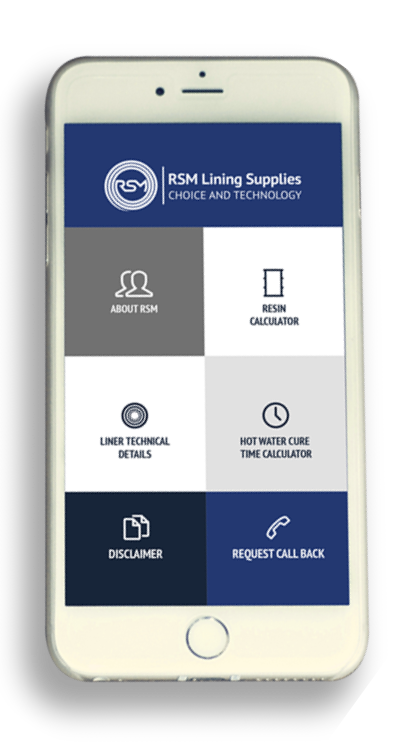Curing Methods
There are a series of curing methods available across the industry, ranging from ambient cure systems using simple thermosetting resins to extremely technologically advanced curing methods using LED and UV Light.
A range of methods from ambient cure systems using simple thermosetting resins to extremely technologically advanced curing methods using LED and UV Light.
Ambient Cure
Ambient Cure is the method used to cure small diameter lining works in short lengths. The process requires minimal equipment for the installation of liners and the contractor benefits from relatively small set up costs coupled with a small installation footprint.
Ambient cure resins are used in short drag in and inversion liners and patch repair systems. The process usually involves using a simple 2 or 3 part resin system that begins to cure as soon as the components come into contact with each other.
CHARACTERISTICS
The processes benefits the client as they are extremely cost effective, and generally reasonably user friendly.
OBSTACLES
The mechanical properties of ambient cure resins are generally not as good as their Hot Cure of UV Cure alternatives.
The products are also limited to the length of repair that is possible due to the nature of the working time available with ambient cure thermosetting resins.
CHOICE
We offer ambient cure variants of polyester, epoxy and silicate products.
OPTIONS
To speed up the cure of ambient cure systems and achieve greater mechanical properties, it is possible to introduce warm water to the system through use of a hot box, this is particularly useful when meeting tight timescales and also to minimise the risk of premature cure, the use of warm curing enables the operative to reduce the use of accelerator and catalyst to get the liner into the ground safely but achieve a cure in the same period of time.
Hot Cure
The hot cure process utilises a hot water boiler, usually in combination with a liner designed for inversion and coated with polyurethane or polypropylene for heat resistance.
Hot Water cure remains industry standard working process for large diameter CIPP rehabilitation.
The liner is impregnated with a long pot life thermosetting resin system, usually Polyester, Vinylester or Epoxy system is used. Each of which have varying characteristics, but all offering greater strength characteristics and working times than their ambient cure counterparts.
CHARACTERISTICS
Dependant on the resin type chosen, up to 500 metres can be installed in one application should the site layout allow. The process also involves a minimal site footprint relative to the repair that is being undertaken.
The system is extremely flexible, liners and resins can be tailored to most CIPP applications.
OBSTACLES
Compared to ambient cure methods, the plant investments to successfully install hot cure liners can be extremely costly. The process also requires potentially large amounts of water that need to be disposed of in accordance with the local water authority guidelines following installations.
CONSIDERATIONS
Liner lengths are also limited by the drainage layout and drag factor this can be calculated prior to the inversion procedure. Curing Water may require disposal and treatment following liner installation.
UV Cure
UV CIPP can be utilised in most pipe profiles up to 1200mm diameter. With the latest technology UV Liners are winched into placed and inflated using a blower system, the UV/ LED light train is then pulled through the liner whilst it is in place and the liner is cured at speeds of up to 3 metres per minute.
CHARACTERISTICS
The system is particularly beneficial to the client as there is reasonably flexible implementation, a short curing time and no water required for the installation.
The system is also completely contained, and thus there is minimal environmental or human impact from each installation.
OBSTACLES
The main drawback for this system is the investment required for a UV equipment.
